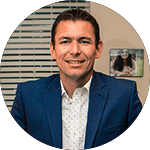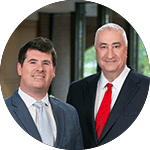Advisors share 6 distinct approaches to client development
Advisors share 6 distinct approaches to client development

How do successful independent financial advisors drive client development? Six advisors share their firms’ strategies.
 We have interviewed dozens of independent financial advisors over the past five years for Proactive Advisor Magazine. They have advisory practices from every corner of the United States and represent dozens of broker-dealers. All share a passion for seeking excellence in their practices and the way they serve clients.
We have interviewed dozens of independent financial advisors over the past five years for Proactive Advisor Magazine. They have advisory practices from every corner of the United States and represent dozens of broker-dealers. All share a passion for seeking excellence in their practices and the way they serve clients.
One of the questions we always ask is, “How do you approach client development?”
The answers often include creative approaches to bringing new clients into an advisor’s practice.
The responses have ranged from fully integrated marketing plans to a singular focus on referrals from current clients. Even in the latter case, progressive-thinking financial advisors usually have an intentional process for encouraging clients to refer friends, family members, or others in their personal network.
We have also sought input from business coaches and other professionals in the financial-services industry on the topic of client development for financial-advisory practices. Two compelling articles in this series include the following:
- “How to ‘replicate’ your firm’s 10 best clients.” This article—based on a webinar presented by Peter Muckley, vice president of marketing at Trust Company of America (TCA)—poses the question “What if you could clone your 10 best clients?” and provides a step-by-step methodology to achieving just that.
- “How do clients view your firm? The questions you should be asking.” This article outlines a process developed by ClientWise’s Ray Sclafani that enables financial advisors to take control of their firm’s “frame” to attract prospects into their pipeline, win the next generation of clients, and deepen their businesses so they can “thrive long into the future.”
We think you will find these articles of great value for your practice.
The best practices in client development that independent advisors have shared with our magazine are equally thought-provoking. They demonstrate that while advisors will play to their own strengths in business development, many of their tactics are applicable to the advisory community at large. Six of these notable strategies are presented here.
Unlike many of his peers, Kevin Brennan does not solely focus on clients that are close to or in retirement in his new business efforts for Brennan Investment Services. In the article, “Building a client base of young families through community events,” Mr. Brennan says of his early days establishing his practice,
Advisor Jay Hardesty, president of Ashton Wealth Management, talks about a creative approach to gaining new clients in “Developing new client prospects using ‘preferrals.’” Mr. Hardesty says,
“I recently came across a marketing concept that I thought was quite constructive on the topic of referrals. It talked about how an advisor could turn the conversation from ‘referrals’ to ‘preferrals.’ I have since built elements of this into my discussions with clients. The idea of ‘preferrals’ basically redirects the process from ‘asking clients for help’ to asking clients if they would like to help one of their friends or family members.”
Daniel Ruben was a successful practicing physician and managed a large health-care group before becoming a financial advisor and the founder of Life Strategies Advisors Inc. He believes the physician community—an attractive and affluent target segment—has specific needs and a behavioral profile that requires “a holistic approach” to helping them improve their financial lives. His website’s “open letter” to the physician community is presented in “Addressing the mindset of physicians on their financial future.”
Jim Hoogasian and Ed Gay have several different approaches for developing new clients. One of the most effective is outlined in “Professional Partners Program provides a winning approach for clients.” Mr. Gay remarks,
“Our firm, Integrated Financial Partners (IFP), has a major focus on what is called ‘The Professional Partners Program.’ IFP advisors will bring comprehensive financial planning to the clients of CPA firms, law firms, property and casualty agencies, associations, banks, and credit unions. The program is designed to assist professional partners in increasing revenues, improving retention, and attracting new business, while providing additional value to existing clients.
“… For our firm, we have a highly professional tax-planning resource, as well as a partner who can provide valued referrals to their own client base. For our CPA partner firm, they also have the opportunity for referrals, as well as being able to provide their current clients with a trusted financial-planning resource.”
Mary Lyons, founder of The Wealth Woman, is known in her area for being an outgoing volunteer and business leader who has forged an impressive network of connections. In “Taking business networking to the next level,” Ms. Lyons says,
“My entire practice has been built through networking, and I devote a lot of time to networking efforts. When I moved to Dallas 10 years ago, I did not know many people here. I decided to take meetings with anyone who I felt was sincerely interested in learning about me and what I do. By following this process diligently, I progressed from working with only a handful of clients to being one of the top producers at our national firm in just three years.”
Telton Hall’s firm, Advanced Financial Planning, “aims to deliver an exceptional wealth-management experience to financial-planning clients, with a focus on retirees.” In “The benefits of targeting a specific client profile,” Mr. Hall talks about several key factors that have helped his practice successfully grow over the years, especially in the context of working with clients who are a good fit with his firm’s philosophy.
Mr. Hall says,
“One was developing a regimented sales and prospecting process. I learned how to effectively track initial contacts, appointments, follow-up appointments, and the eventual acquisition of a client. This helped me figure out where I needed to apply the most effort to keep the process moving along and productive. …
“The second was developing my expert professional team, a robust network of third-party professionals who can provide specific guidance to my clients in their areas of expertise. We call this the ‘advanced planning stage’ of our client relationship, where I can work with experienced professionals in the tax, insurance, legal, or health-care areas to brainstorm solutions for specific client needs. … An important secondary benefit of this professional network is the ability to cross-pollinate our practices with valuable referrals from each other.”
Also, please check out our article “Wealth-management trends: What defines ‘high-growth financial advisors’?” In this article, research findings from the PriceMetrix study “The State of Retail Wealth Management 2017” identify key trends and factors for the most successful financial advisors.
 David Wismer is editor of Proactive Advisor Magazine. Mr. Wismer has deep experience in the communications field and content/editorial development. He has worked across many financial-services categories, including asset management, banking, insurance, financial media, exchange-traded products, and wealth management.
David Wismer is editor of Proactive Advisor Magazine. Mr. Wismer has deep experience in the communications field and content/editorial development. He has worked across many financial-services categories, including asset management, banking, insurance, financial media, exchange-traded products, and wealth management.






